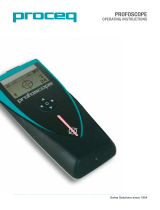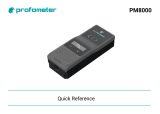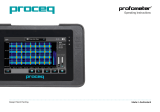
12 / 18
4.1 Differences and similarities between HIT-FP 700 R, grouts and
resin-based mortar
HIT-FP 700 R as an inorganic cement-based mortar provides unique fire resistance properties which
are superior to those of resin-based mortars. Due to its inorganic characteristics, HIT-FP 700 R has a
more stable displacement and performance at high temperatures. However, unlike inorganic grouts, it
is characterized by its safer, more flexible and increased user-friendly application properties, which
resemble the application of resin-based mortars. HIT-FP 700 R is applied by using our standard two-
component injection system. This technology tackles limitations for the installation direction [7], which
is typical of grouts (i.e., only downwards or inclined). The automatic use of predefined mixing
proportions during injection clearly reduces the risk of erroneous or inconsistent mixing proportions,
which is vital for the performance and durability of the mortar [7] and may occur when handling
commercially available grouts on the job site. A tailored smooth consistency helps to avoid the need for
large drilling diameters when compared to the rebar size, minimizing the amount of HIT-FP 700 R
mortar needed.
The qualified anchoring mortar for post-installed rebars typically follow these guidelines:
• Declaration of performance based on EN 1504-6 [8]
• ETA (European Technical Assessment) based on EAD 330087-02 [1]
• ESR (Evaluation Service Report) based on ICC-ES AC308 [9]
The EN 1504-6 [8] does not provide a qualification as detailed as the other two methods. The EN1504-6
is outdated and does not consider important parameters in the qualification process of mortars, which
could yield to connections designed in an unconservative way [7]. Post installed rebars having an ETA
or ESR approval and designed in accord to ACI 318 [10] or Eurocode 2 (EN 1992-1-1) [2] ensure the
same safety level as for cast in rebar design. Hence the Declaration of performance based on EN1504-
6 [8] does not provide an adequate safety level for the qualification of post-installed rebar connections
and it is not compatible with design methods given by existing building codes [11].
HIT-FP 700 R Installation vs grouts
Figure 4-4: Installation of HIT-FP 700 R and generic grouts.
Furthermore, as with other Hilti injectable mortar portfolio, HIT-FP 700 R is offered with Hilti SafeSet
technology, in which dust is automatically extracted during the drilling process and the drill hole is
additionally cleaned in compliance with ETA. The mortar is injected into the borehole with an automatic
dispenser before the element is inserted into the borehole. Hilti SafeSet system is a combination of
anchor system components that significantly increase the rebar's robustness and help to significantly
reduce potential user errors during the installation process.
Figure 4-5: SafeSet technology installation
























